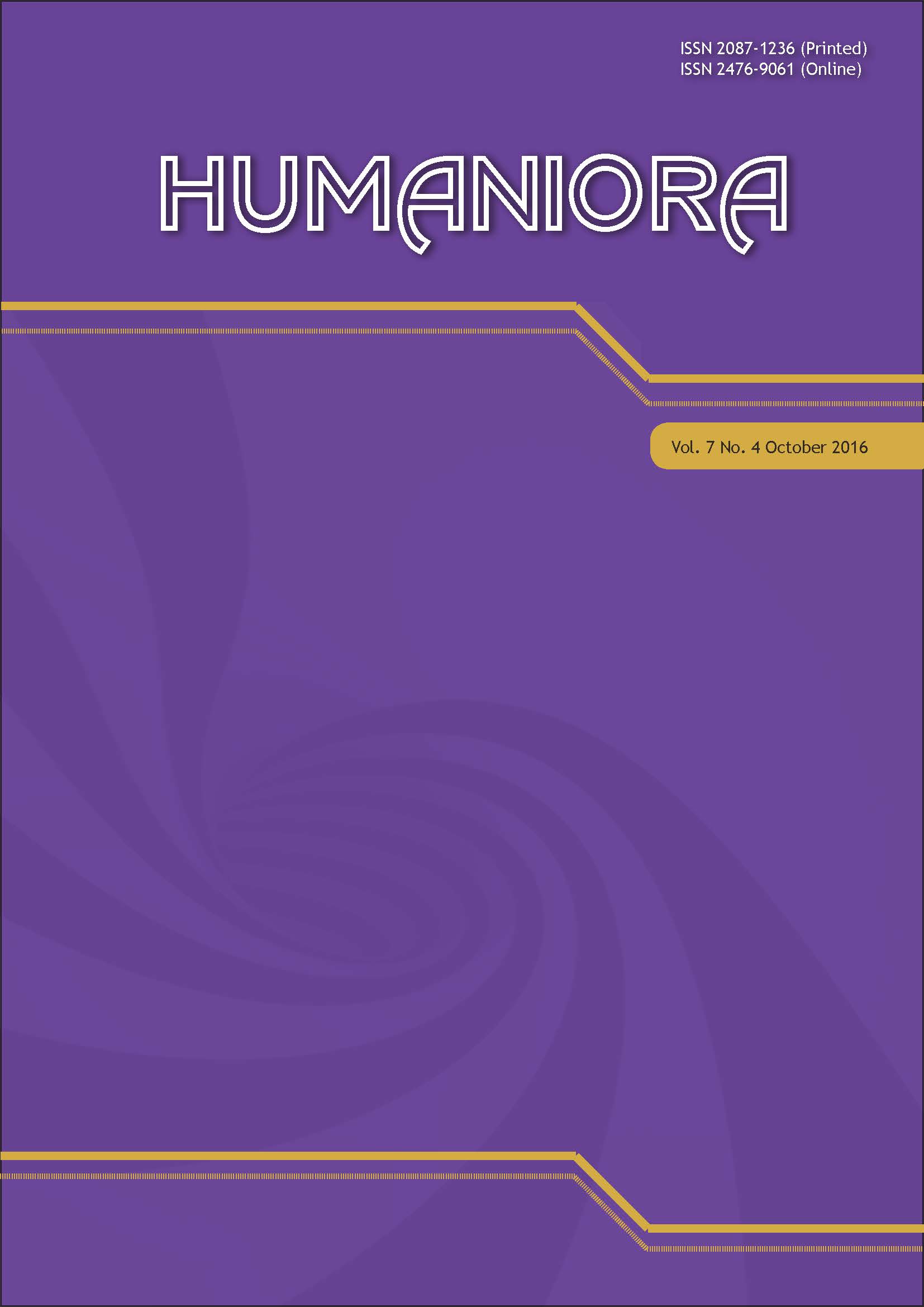Citizen’s Voice on Local Cybermedia Balebengong
DOI:
https://doi.org/10.21512/humaniora.v7i4.3605Keywords:
citizen journalism, public sphere, local cyber media, BalebengongAbstract
The development of technology has played a big role to citizen journalism. Balebengong is an example of Local cyber citizen journalism media. The purpose of this research was to understand how the practices of the public sphere in the local cyber media Balebengong. The used theories in this research were citizen journalism and the public sphere. With interpretive paradigm and qualitative method, this research used interview and online data. The object of research was local cyber media Balebengong and key informant who were the contributor and editor of Balebengong. The implications of this research were expected to provide inputs for traditional media in providing more public space portion citizen journalism or more so that the public could also participate in the nation. The result of this research is Balebengong has provided enough public spheres for the members of its society to contribute to it.
Â
Â
References
APJII. (2014). Press Release - Profil Terkini Internet Industri Indonesia. Retrieved July 30th, 2014 from http://www.apjii.or.id/v2/read/content/info-terkini/213/press-releaseprofil-terkini-internet-industri-ind.html
Allan, S., & Thorsen, E. (2009). Citizen Journalism: Global Perspective. New York: Peter Lang Publishing, Inc.
Baxter, L. A., & Babbie, E. R. (2004). The basics of communication research. CA: Belmont.
Galtung, J. (1999). State, Capital, and the Civil Society: The Problem of Communication. In R. Vincent, K. Nordenstreng and M. Traber (eds.), Towards Equity in Global Communication: MacBride Update. Cresskill, NJ: Hampton Press.
Habermas, J. (1991). The Structural Transformation of the Public Sphere: An Inquiry into a category of Bourgeo is Society. Translated by Thomas Burger with Frederick Lawrence. Cambridge, MA: MIT Press.
Lindawati, L. (2014). Mengeraskan Suara Desa: Studi Kasus Peran Media Lokal Online Dalam Mengarustamakan Wacana Desa Mandiri di Kabupaten Banyumas Jawa Tengah pada tahun 2013-2014. In Proceeding Indonesia Media Research Awards & Summit (IMRAS) Tren Pola Konsumsi Media Di Indonesia. Jakarta: SPS Indonesia.
Lindlof, T. R., & Taylor, B. C. (1995). Qualitative Communication Research Methods. California: SAGE Publication Ltd.
McQuail, D. (2005). McQuail’s Mass Communication Theory. Fifth Edition. London, United Kingdom: Sage.
Monaghan, G. & Tunney, S., eds. (2010). Web journalism: a new form of citizenship? In: Monaghan, G., & Tunney, S., (eds.). Sussex Academic Press. ISBN 9781845192785
Muhajir, A., Sumberdana, A., & Wedra, P. S. (2012). Perkembangan Media Daring dan Jurnalisme Warga. Sloka Institute. Warga Bicara Media: Sepuluh Cerita, Centre for Innovation Policy and Governance (CIPG) dan HIVOS Jakarta.
Muhajir, A. (2007, 8th August). Sekilas Peta Media Cetak di Bali. Retrieved August 18th 2015 from http://balebengong.net/kabar-anyar/2007/08/08/sekilas-peta-media-cetak-di-bali.html
Setianto, Y. P. (2010). Public Sphere and the New Media (How Democratization and Political Communication in the Internet Shape the Indonesian Society). Retrieved August 18th 2015 from https://yearrypanji.wordpress.com/2011/03/10/public-sphere-and-the-new-media-how-democratization-and-political-communication-in-the-internet-shape-the-indonesian-society/.
Suparyo, Y., & Bambang, M. (2011). Pewarta Warga. Yogyakarta: Combine Resource Institution.
Yunni, I. (2013, 12th March). Jurnalisme Online Sering Dinilai Tak Serius. Retrieved August 17th 2015 from http://nasional.tempo.co/read/news/2013/03/12/173466520/jurnalisme-online-sering-dinilai-tak-serius
Downloads
Published
How to Cite
Issue
Section
License
Authors who publish with this journal agree to the following terms:
a. Authors retain copyright and grant the journal right of first publication with the work simultaneously licensed under a Creative Commons Attribution License - Share Alike that allows others to share the work with an acknowledgment of the work's authorship and initial publication in this journal.
b. Authors are able to enter into separate, additional contractual arrangements for the non-exclusive distribution of the journal's published version of the work (e.g., post it to an institutional repository or publish it in a book), with an acknowledgment of its initial publication in this journal.
c. Authors are permitted and encouraged to post their work online (e.g., in institutional repositories or on their website) prior to and during the submission process, as it can lead to productive exchanges, as well as earlier and greater citation of published work.
USER RIGHTS
All articles published Open Access will be immediately and permanently free for everyone to read and download. We are continuously working with our author communities to select the best choice of license options, currently being defined for this journal as follows: Creative Commons Attribution-Share Alike (CC BY-SA)




















